To begin with, it is worth understanding what psoriasis is and what the causes of this disease are.Psoriasis is a chronic non -infectious chronic disease, which is characterized by the eruption of yellow red nodules and spots with a peeling surface on the body.Very often, psoriasis is recorded in young people aged 18 to 45, but there are cases of psoriasis in children and the elderly.The essence of the disease is that, for the unknown reason, the cells of the epidermis begin to share in an accelerated way, forming thickening of the skin and further growth in these places of capillaries.
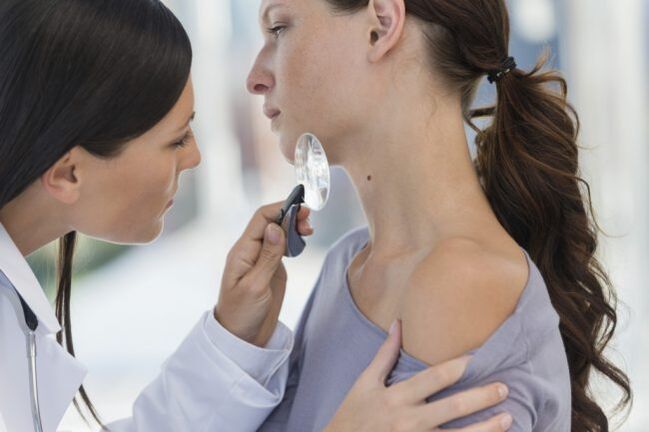
This disease accompanies humanity not a hundred years and perhaps from the moment of its appearance.The researchers find the remains of ancient mummified people who were sick of psoriasis.In the Middle Ages, this disease was often exchanged for leprosy and only in the middle of the nineteenth century.Psoriasis has been defined as a separate disease - from this moment the scientific study of the disease has begun.Surprisingly, to date, scientists cannot fully discover the cause of the disease.On this occasion, several theories have been advanced:
- Inheritance.The cause of the disease is the breakdown of the immune system, inherited.So if one of the parents is sick of psoriasis, the probability of a disease in a child is about 20%.If both parents have a disease, the probability of psoriasis in a child increases to 80%.Scientists note that not the disease itself is inherited, but only a predisposition to its presence.
- Viral theory.The justification that the causal agent of psoriasis can be a virus has tried to find many scientists.At the moment, confirmation of this theory has not been found.However, other infectious diseases: influence, tonsillitis, acute respiratory viral infections can affect the course of the disease, causing an exacerbation or becoming a trigger for the first external manifestations of psoriasis.
- Immune theory.The most justified and universally recognized version of the aspect of psoriasis.The bottom line is that the cause of the disease is a violation of the cell bond of immunity.More and more scientists are prone to the fact that the disease is autoimmune, that is, the defenses of the body turn against themselves and begin to refuse skin cells, perceiving them as an alien.
- Exchange theory.To discover the causes of the pathology, scientists have conducted numerous exams of patients with psoriasis.During this process, it was discovered that everyone has violations in the metabolism.In particular, low body temperature;increase in cholesterol in the blood;Interrupted balance of vitamins.All this leads to the conclusion that disorders in the exchange process play an important role in the occurrence of the disease.
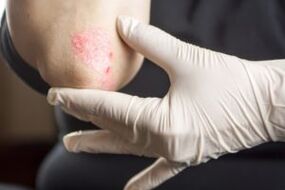
Factors that cause the development of psoriasis
The fact that there are some triggers who cause the disease or cause exacerbation is known both by patients and from the treatment of doctors.These reasons include:
- Stress, nervous overster, psychological trauma;
- Hormonal violations;
- Take certain drugs: antibiotics, vitamins B, anti -inflammatory drugs;
- Mechanical lesions of the skin: cuts, burns, deep scratches;
- Infectious diseases: tonsillitis, media otitis, sinusitis and infections caused by streptococcus - scarlat fever, erisipelas, etc.;
- Drink alcohol, non -conformity with the regime, malnutrition, smoke;
- A strong change in the climate, in the long term remains in the sun.
Symptoms of psoriasis
How to recognize the signs of an insidious disease and prevent him from spreading?The course of psoriasis is cyclical: the periods of exacerbations are replaced by periods of remission.The disease has different forms, each of which has its own characteristic characteristic characteristics, but there are general symptoms, the totality of which clearly indicates the presence of psoriasis in the patient.This is the psorial triad as follows:
- The phenomenon of Stearin's drop.If you disperse the surface of a psoriatic plaque with a nails, the stairs of the keratinized skin, similar to the frozen starch droplets, separate from it.
- Under the separate layer of keratinized particles, there is a shiny red shiny film.
- "Bloody Dew."If you scrach this film with a nail, small drops of blood will perform.The fact is that under it there are capillaries with thin walls and that hemorrhages at multiple points derive from the slightest physical effect.
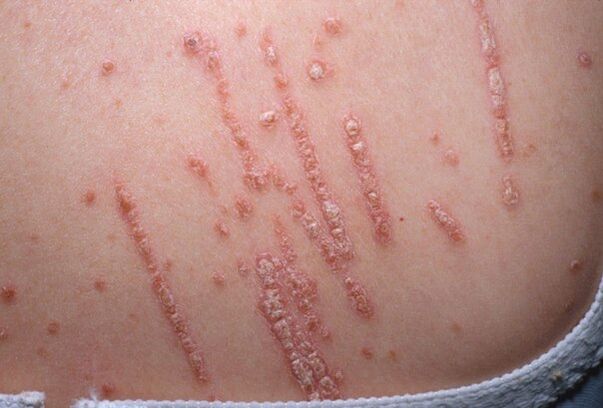
All these symptoms are accompanied by the itching in the affected area.Very often, the first psoriatic plates appear in places such as knees, elbows, inguinal region, scalp, armpits.First of all, the rashes are single, but as the disease develops, their number increases and the plates can merge between them, influencing the growing surface of the body.Kebner's syndrome also occurs: the presence of new skin eruptions in places of skin irritation.
Vulgar or ordinary psoriasis
One of the most common forms of the disease is that 80% of patients with psoriasis are diagnosed by psoriasis vulgaris.The most characteristic feature is the appearance on the body of the reddish papules - nodules that have a rounded shape, clearly defined boundaries and rise slightly above the skin.The spots are covered by a grayish raid with separate stairs.Solding eruptions can affect both individual parts of the body and spread throughout the skin, mainly located in the folds of the skin, the joints of the joints, places of frequent contact and friction of the skin on clothes.
Psoriasis of the scalp
In this form of the disease, mainly part of the head, covered with hair, but with a further course of the disease, the plates can spread on the face, the ears and the neck area.Since it is quite difficult to see what is happening on the head independently, often in the initial phase of hair psoriasis, they merge with ordinary dandruff and do not attribute much importance to symptoms.What are the warning signs:
- Dry scalp;
- Severe itching;
- Pain and burning in the affected area;
- The aspect of peeling similar to dandruff;
- Hair loss.
Nail psoriasis
Psorial onichestrofia or nail psoriasis can manifest themselves as an independent disease and is a complication of ordinary psoriasis.The external signs of the disease are very similar to a fungal infection.The nail plate thickens, its changes in color: it can vary from yellowish to gray.Naked eyes are visible traces of underwater hemorrhages - spots of red or purple.There is an oil point syndrome: a yellowish stain under the nail plate.The nail itself is flattened, it becomes rough to the touch, in the center there are pressed traces.Even small holes, as from the injections with a needle, the surface begins to look like a dietale.Under the nail bed, the process of accumulation of dead cells begins, in the future this can lead to the detachment of the nail and its loss.Both nails on the fingers of both hands or only some can be affected.
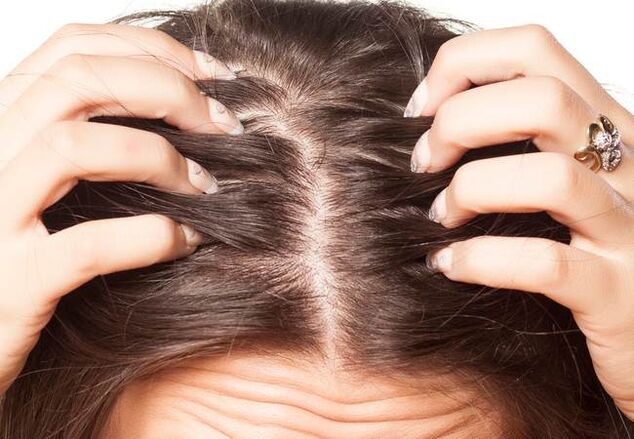
Pustullenia psoriasis
It differs from the usual as the lesion is characterized by the appearance of redness and pustules - bubbles with purulent content.With the further development of the disease, the bubbles begin to detach themselves, exposing the surface of the erosion.Pustolous psoriasis has a more serious path, it can be complicated by the connection of a secondary infection, from the intoxication of the body to death.
Genital psoriasis
A fairly rare form of illness.It is characterized by the appearance of small drop -shaped plates up to 1 centimeter in diameter.Favorites: Arts and Body.The aspect of rashes is accompanied by a serious itching, often this is preceded by the transfers from streptococcus infection.
Psoriasis from Ladomaria-Contentuta
It is diagnosed in 15% of all patients with psoriasis.This form is characterized by the occurrence of papules on the palms and plants of the feet.In the affected areas there is serious itching and heat, often the skin breaks and bleeds.Patients have strong difficulties when walking, the inability to perform any action with the hands.The pustling type of Psoriasis Palmar is characterized by the appearance of redness and bubbles with liquid content on the skin.
Psoriasis for exudation
This type of disease is characterized by the formation of crying plates with irregular edges, covered by numerous layers of a crust with gray hair.These crusts are formed by the impregnation of keratinized particles for exudate, when trying to remove them, the plaque acquires a reddish color, it can start bleeding.This form is often found in patients, in the history of which there are problems in the work of the endocrine system, metabolic disorders, diabetes mellitus.
Psoriatic arthritis
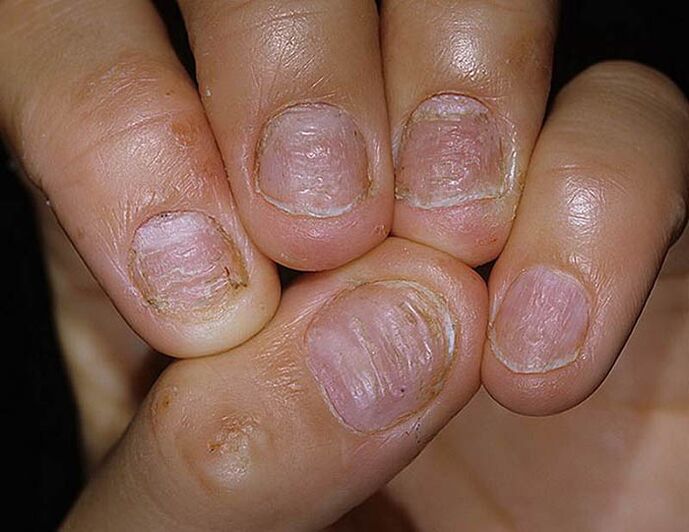
It is characterized by a series of symptoms of psoriasis and arthritis.Patients experience joint pain, limited in their mobility, the fingers swell strongly, the skin that surrounds them acquires a bluish tint.In addition, the disease can affect the spine and the sacred.In addition to the joints, also the tendons and joint cartilage.
Diagnosis of psoriasis
As in the treatment of any other disease, the main thing is to discover the enemy per person and start a complete treatment as soon as possible.The first thing to do if you suspect that the presence of psoriasis is to contact a dermatologist.The doctor will carry out a visual examination, scrape by the affected area and will prescribe the tests:
- General blood examination;
- General urine analysis;
- Calais analysis for Golist delle Eggs.
- Blood test
- Urine analysis
- Calais analysis
Sometimes these measures may not be sufficient for an accurate diagnosis, since the symptoms of psoriasis can be expressed lubricated.In this case, in order to distinguish psoriasis from other similar skin diseases, a biopsy is prescribed: separating a piece of tissue and subsequent histological examination in the laboratory.In addition, the doctor collects information on clinical manifestations, the patient's complaints, as well as the image of his life, the presence of bad habits and the hereditary predisposition to the disease.
Treatment of psoriasis
Unfortunately, it is impossible to completely get rid of psoriasis.However, this does not mean that you simply cannot pay attention to the presence of this diagnosis.Without prejudice to all the recommendations prescribed by the attending physician, you can get a long persistent remission and live for years, not remembering that you are sick of psoriasis.There is no universal treatment methodology, since it depends on factors such as:
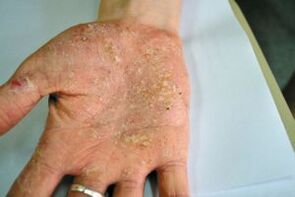
- Age of the patient;
- Type of psoriasis;
- The dimensions of the areas concerned and the place of their position;
- The severity of the disease.
As a rule, the treatment of psoriasis is a set of measures aimed at eliminating and mitigating the symptoms of the disease, maintaining the strength of the body, eliminating the cause that caused the exacerbation of the disease.
Drug therapy
The rest of the disease will have to fight the disease, therefore, for patients with diagnosis of psoriasis, the following treatment technique have been developed: first of all, drugs are prescribed with the least number of side effects.If the therapy does not have the appropriate effect, the drugs are replaced with more powerful.But also a well -chosen medicinal course must have changed from time to time.This is necessary so that the body is not used for a certain drug and the effect of its action does not reach anything.The treatment includes the intake of medicines and local ointments.The following drugs are prescribed:
- Antihistamine: relieve itching, allow you to sleep peacefully at night;
- Retinoids - the derivatives of vitamin A - have a favorable effect on the condition of the skin;
- ENTEROSORBENTS: Their goal is to clean the body of toxins;
- Epoprotectors - have a protective and restoration effect for liver cells;
- Enzyme-help the gastrointestinal tract with the load;
- Non -pounding drugs: alleviate inflammation and pain;
- Antibiotics - are necessary in cases where the course of the disease is complicated by the connection of the infection;
- Cytostatic - reduce the pathological increase increased cell division;
- Immunosuppressors;
- Organic products.

In the initial phase of psoriasis, the unpleasant symptoms can eliminate various ointments and creams, which are also a mandatory component of a complex of measures in the treatment of advanced cases of the disease.These funds can be divided into two large groups: not containing hormonal and hormones.
Physiotherapy
- A few decades ago, the positive effect of UV rays on the skin affected by psoriasis has been demonstrated.Today this method is successfully used in the treatment of the disease.Or the radiation are performed using special installations and both the entire body and the individual areas can be displayed.
- Patients with psoriasis diagnosis often begin to suffer from depressive disorders associated with experiences on disease.In this case, Electron can help.The procedure has a sedative effect, the patient relaxes, his psychological state is stabilized.All this favorably affects the course of the disease.
- Magnetotherapy helps improve blood circulation, reduce itching, normalizes metabolism.
- The cryotherapy or cold treatment procedure has also demonstrated its effectiveness in the treatment of psoriasis.The affected areas are exposed to liquid nitrogen steam, consequently, the itching are launched, metabolic processes active in skin cells are launched.
- The resort-health treatment can have a very beneficial effect and promote the patient who enters the remission stage.
If you have diagnosed psoriasis, try not to fall into despair.Medicine does not stop and every year more advanced drugs appear that allow you to get rid of the symptoms of the disease for a long time.Follow all the doctor's recommendations, guides a healthy lifestyle and, as far as possible, avoids the factors that can cause exacerbation.
























